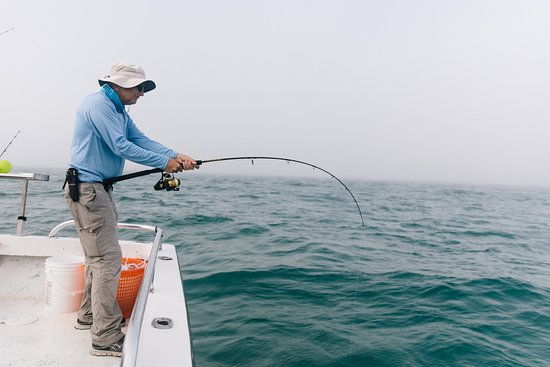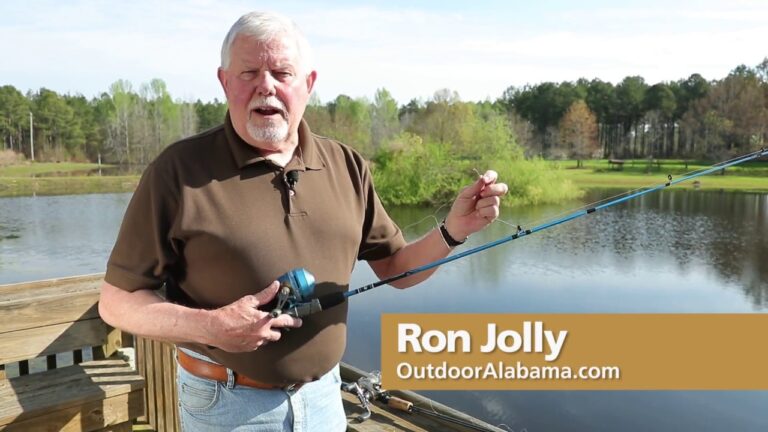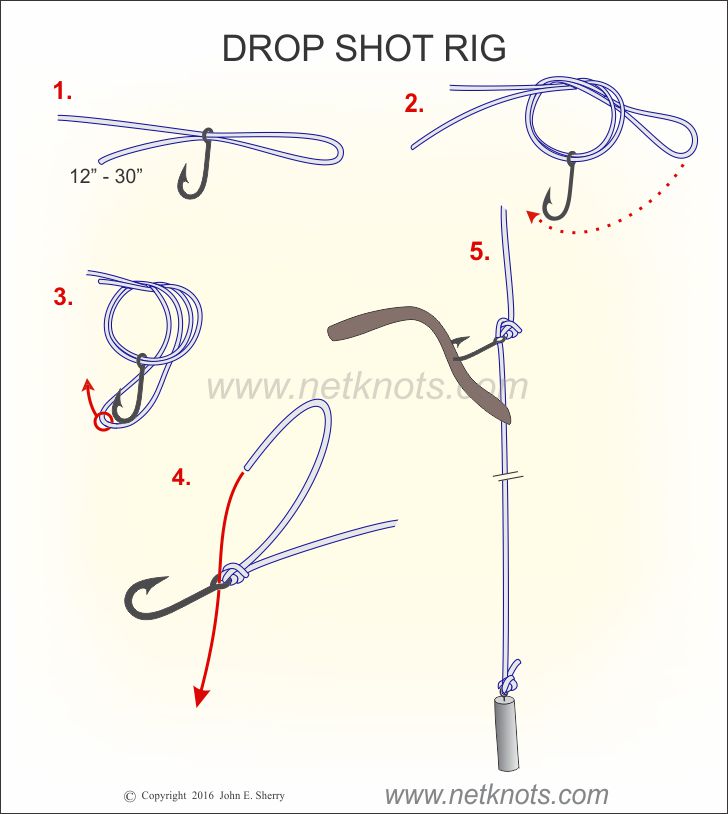How to Bait a Hook With a Minnow
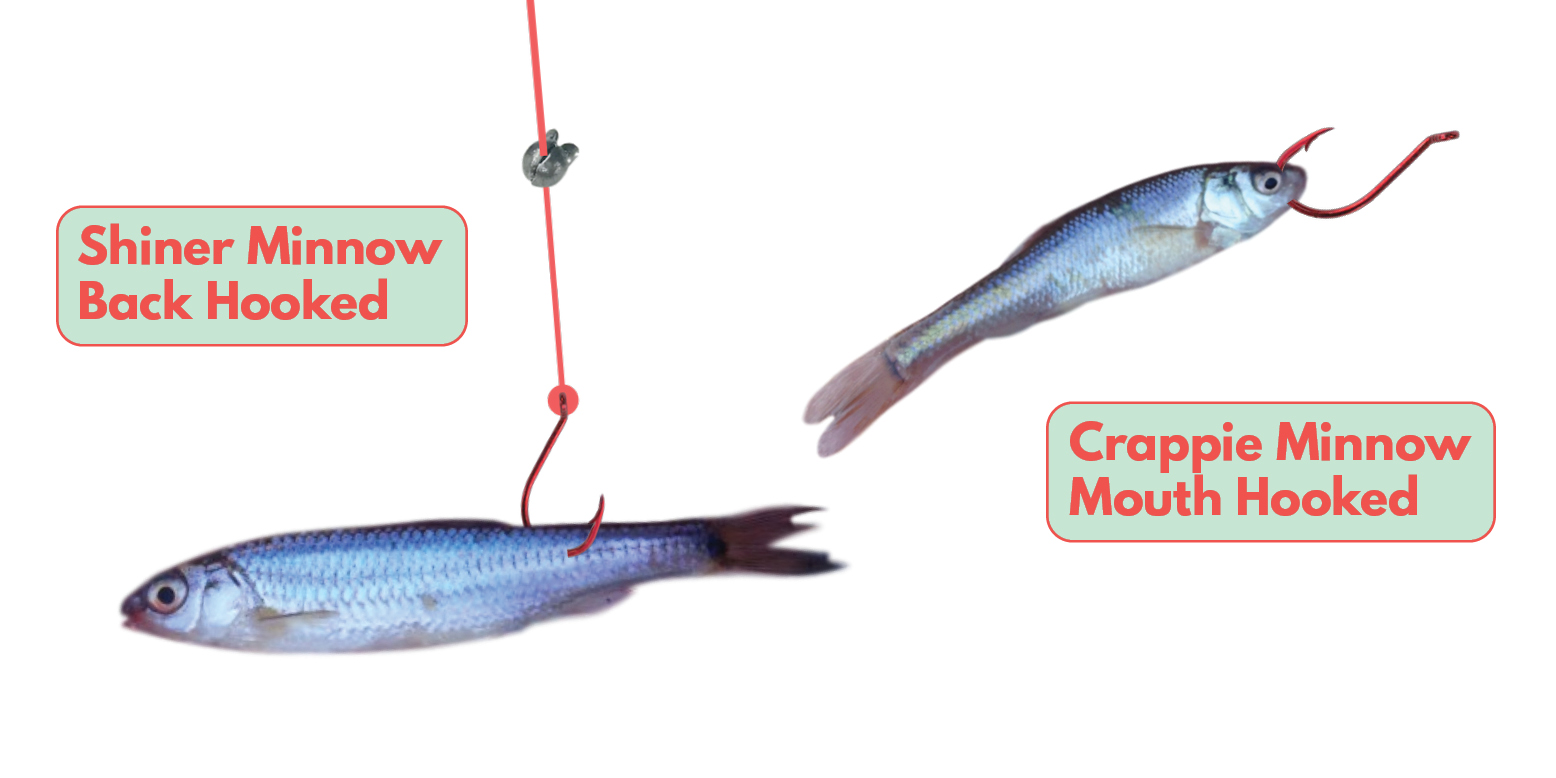
To bait a hook with a minnow, thread the hook through the lip or back. Ensure the minnow has enough freedom to move naturally.
Baiting a hook with a minnow can be a game-changer for anglers aiming to attract a wide array of fish. Live minnows are highly effective due to their natural movement and scent, which triggers predatory instincts in fish. The art of hooking a minnow properly can mean the difference between a successful catch or losing your bait to savvy fish.
It’s a skill that combines finesse with a strategic approach to mimic the lively actions of prey in the water. Considering minnows are a favorite meal for species like bass, walleye, and pike, mastering this technique can significantly increase your catch rate during fishing excursions. An adept angler knows that the precise method of hooking a minnow is crucial to outwit the target fish.
The Art Of Successful Angling
Mastering the art of angling demands a good grasp of using live bait. Minnows are top choices for enticing fish, but understanding their behavior is key. Fish pursue minnows for their swift movements and vitality, which suggests freshness and an easy meal. Rigging a minnow properly can mimic these natural actions, greatly enhancing your chances of a catch.
Keeping minnows lively until they’re on your hook involves proper storage. A bucket with fresh water and an aerator will ensure your bait remains active. To hook a minnow, you need to be delicate to keep it alive longer. Insert the hook through the tail or lips for optimal movement. Hook placement is crucial; it should not interfere with the minnow’s ability to swim. Handled with care, a live minnow on your hook will be irresistible to fish.

Credit: m.youtube.com
Selecting The Perfect Minnow
Selecting the right size minnow is crucial for successful fishing. The minnow should match the size of the fish you’re targeting. Large minnows attract big predators, while small minnows are perfect for panfish.
Ensure your minnows are lively and healthy. Fish prefer bait that moves naturally in the water. Look for minnows with clear eyes and shiny scales. These signs indicate the minnow is fresh and strong.
Tools And Materials
Selecting the ideal hook is crucial for minnow baiting. Use a light wire hook for tiny minnows to prevent injury. For larger minnows, a longer shank hook ensures a secure hold. Remember, the hook size should match your minnow size.
Among the essentials, a bucket with water keeps your minnows alive. You’ll also need needle-nose pliers to remove hooks safely. A bobber or float can indicate when fish are biting. To keep the hook in place, consider using a split shot sinker.
Preparing To Bait Your Hook
Safe handling of minnows is crucial for effective baiting. Use wet hands or a net to avoid removing their protective slime coating. This coating shields them from infections and helps them stay lively. To keep the minnows alive, provide well-oxygenated water. A simple method is using an aerator or ensuring regular water changes. Store them in a cool, shaded area and avoid overcrowding to reduce stress. Separating larger minnows from smaller ones can also prevent cannibalism, helping maintain a healthy bait supply.
The Baiting Technique
Baiting a hook with a Minnow is all about the technique. Hooking through the lip ensures your bait stays alive longer. Carefully pierce the hook upwards through the minnow’s bottom lip. Then, gently thread it out through the top lip. It allows natural movement and attracts fish.
For active minnows, back hooking is effective. Place the hook gently into the back flesh. Do this without hitting the spine. It gives the minnow freedom to swim vigorously. This makes the bait more appealing. Strong movement spells an irresistible meal for game fish.

Credit: www.wikihow.com
After The Bait: Next Steps
Casting a hook with a minnow can be tricky. To avoid losing your bait, make precise and smooth movements. Quick or jerky motions may cause the minnow to fly off the hook. Instead, use a gentle lobbing technique to keep the bait secured. It’s essential to cast in an area where fish are likely to be present.
Feeling for bites from fish requires attention. Live minnows often attract fish through their movement. Keep a close watch on the rod tip and the line. A sudden twitch or unusual movement could indicate a bite. Maintain a firm grip on the rod. This way, you can set the hook effectively when you detect a bite.
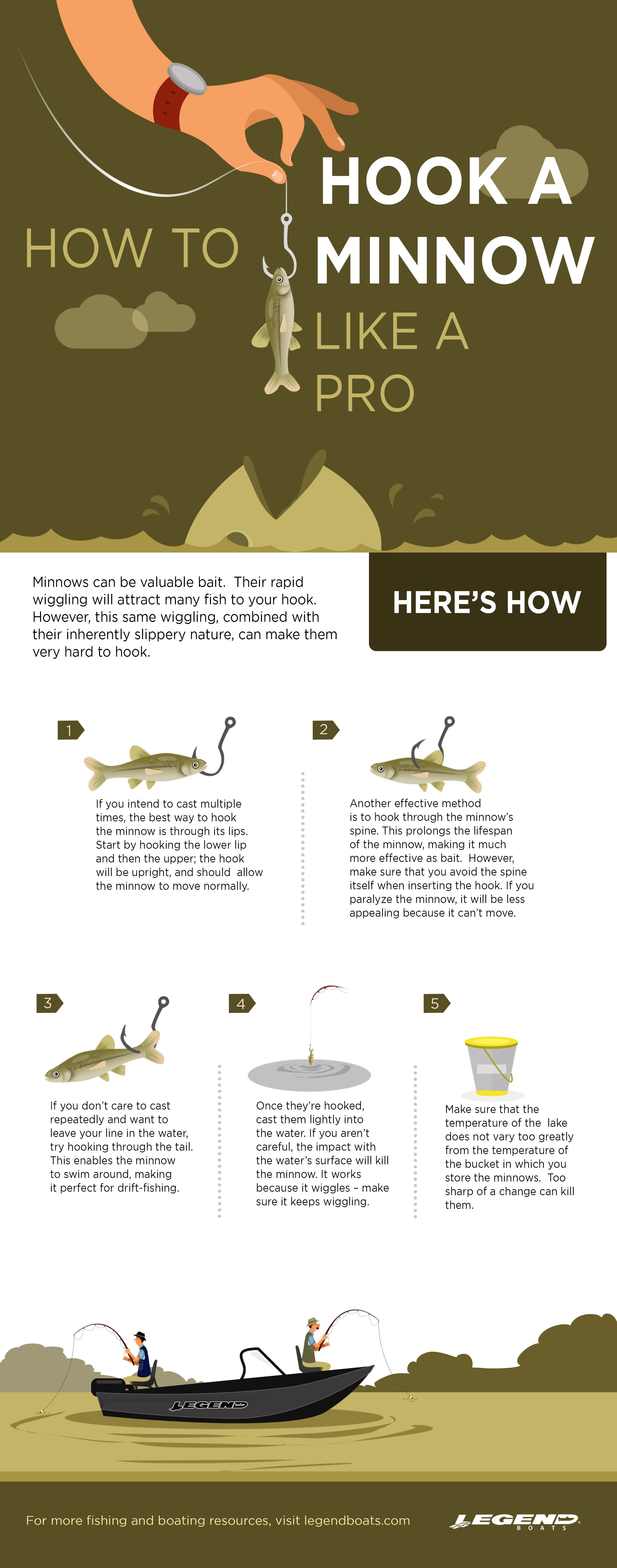
Credit: www.legendboats.com
Frequently Asked Questions On How To Bait A Hook With A Minnow
How Do You Fish With Minnows?
To fish with minnows, hook them through the lips or back without hitting the spine. Use a bobber for visibility and adjust your line for the desired depth. Keep the minnows lively for an effective presentation to attract fish.
What Is The Best Way To Hook A Minnow For Crappie Fishing?
The best method to hook a minnow for crappie is through the lip or back. Hooking through the lips allows natural movement, ideal for appealing to crappies. Alternatively, back-hooking helps minnows swim upright, making them more attractive to predatory fish.
Where Is The Best Place To Hook A Minnow?
For a lively and natural presentation, hook a minnow through its back just above the dorsal fin. Avoid damaging the spine for optimal movement.
How Do You Put Bait On A Hook?
Cut your bait into pieces if it’s too large. Thread the hook through the bait to secure it. Make sure it’s well-attached and covers the hook to entice fish. Avoid excess dangling pieces that can snag debris. Always handle hooks with care to avoid injury.
Conclusion
Mastering the art of hooking a minnow sets the stage for a successful fishing trip. Embrace patience and finesse, and remember, practice makes perfect. With these tips, you’re ready to cast your line and reel in the big ones. Tight lines and happy fishing!

